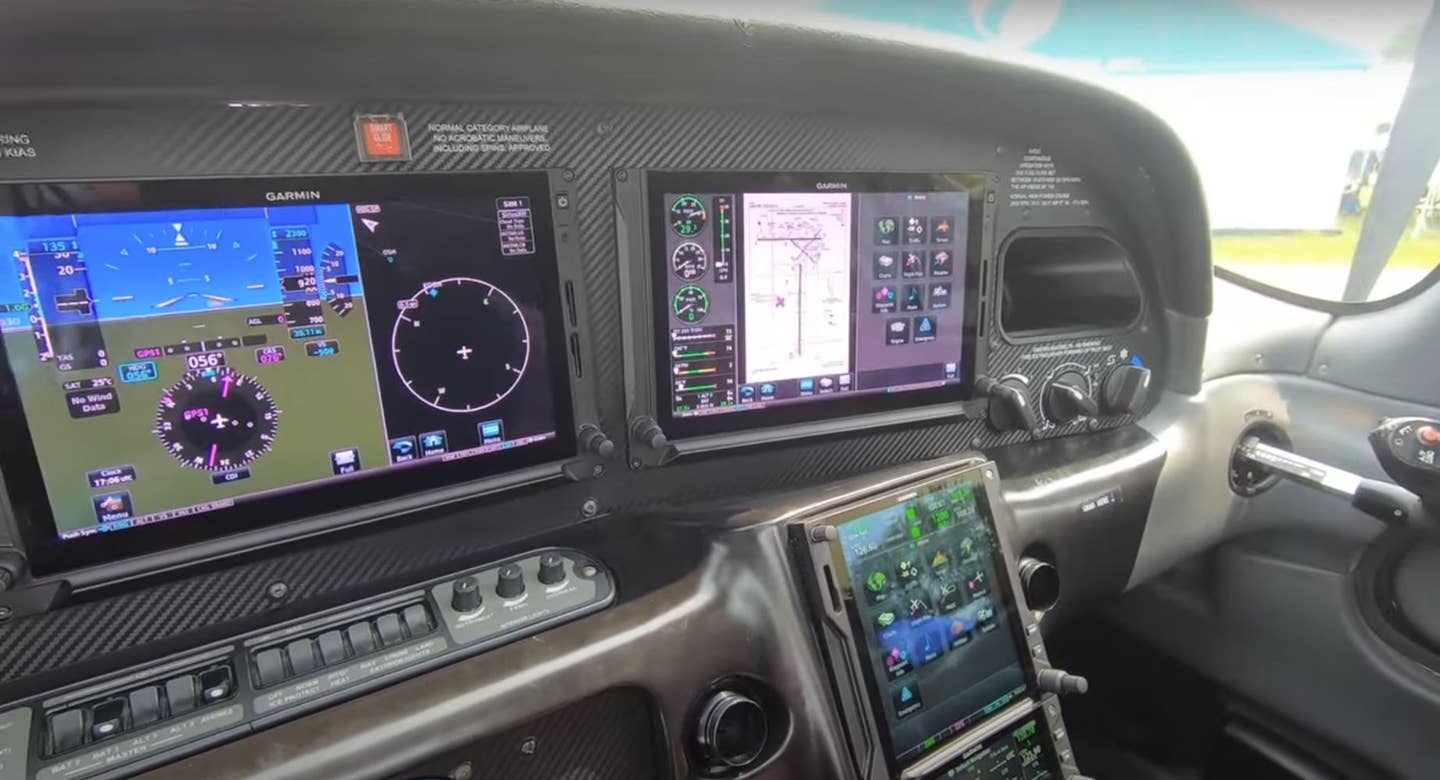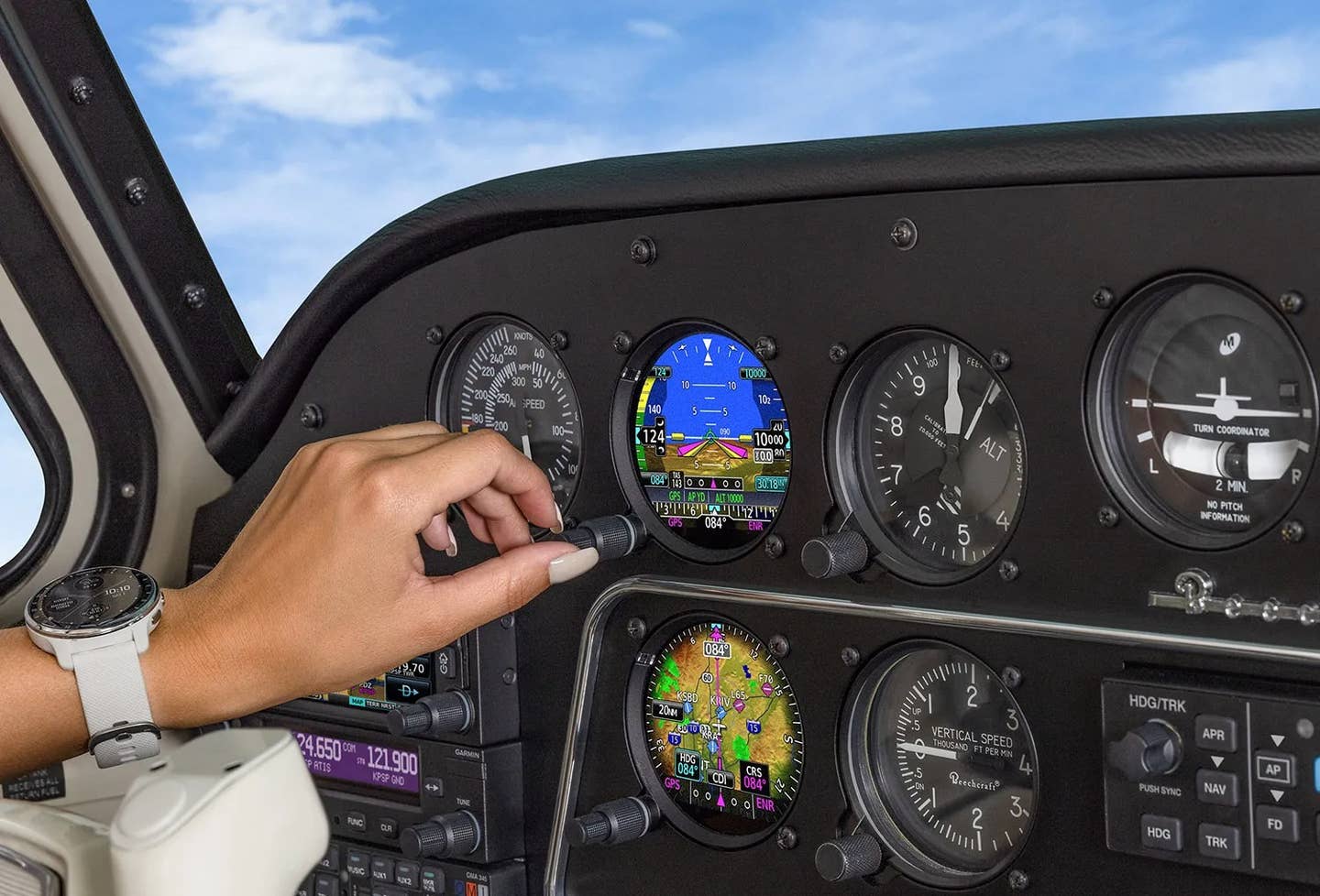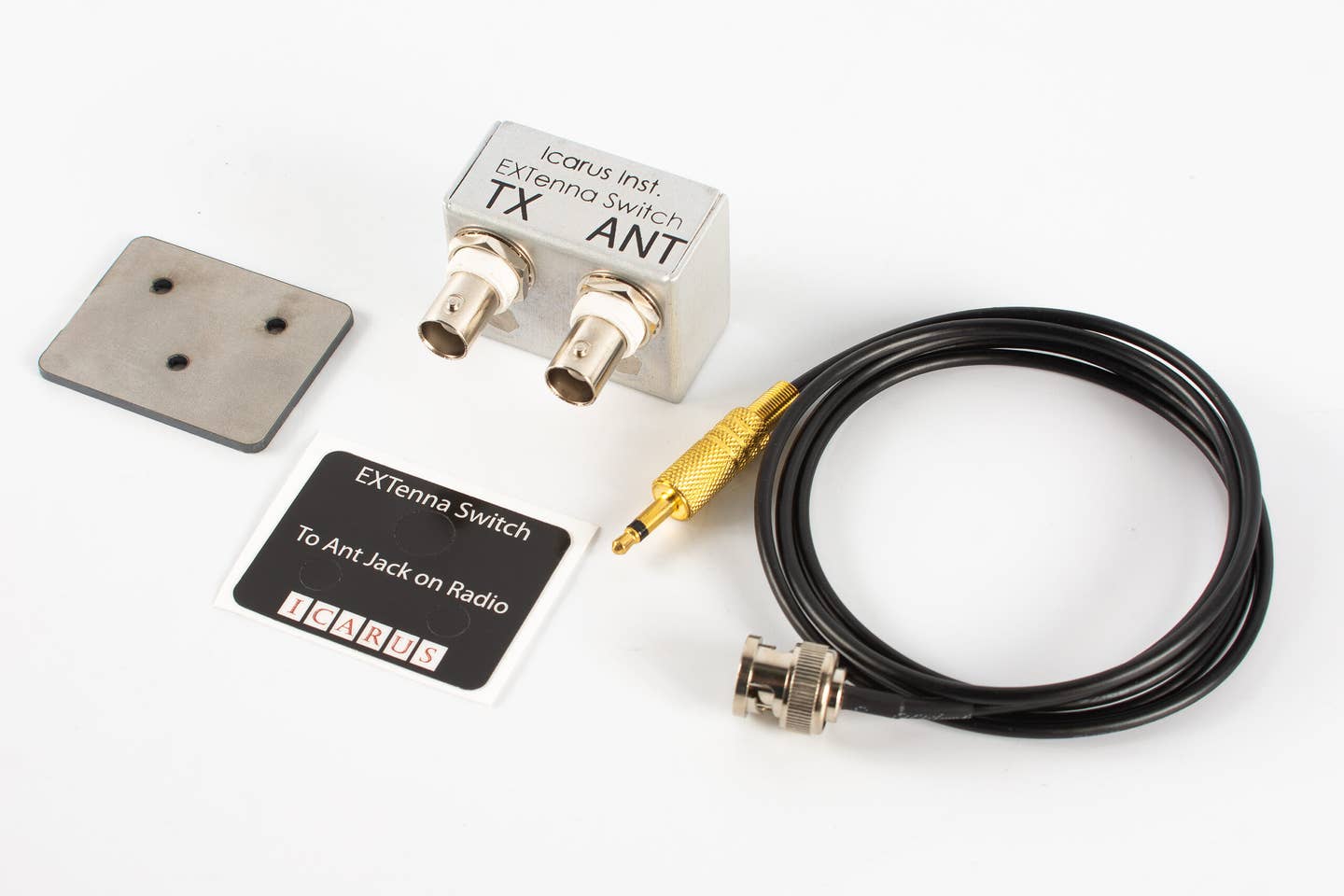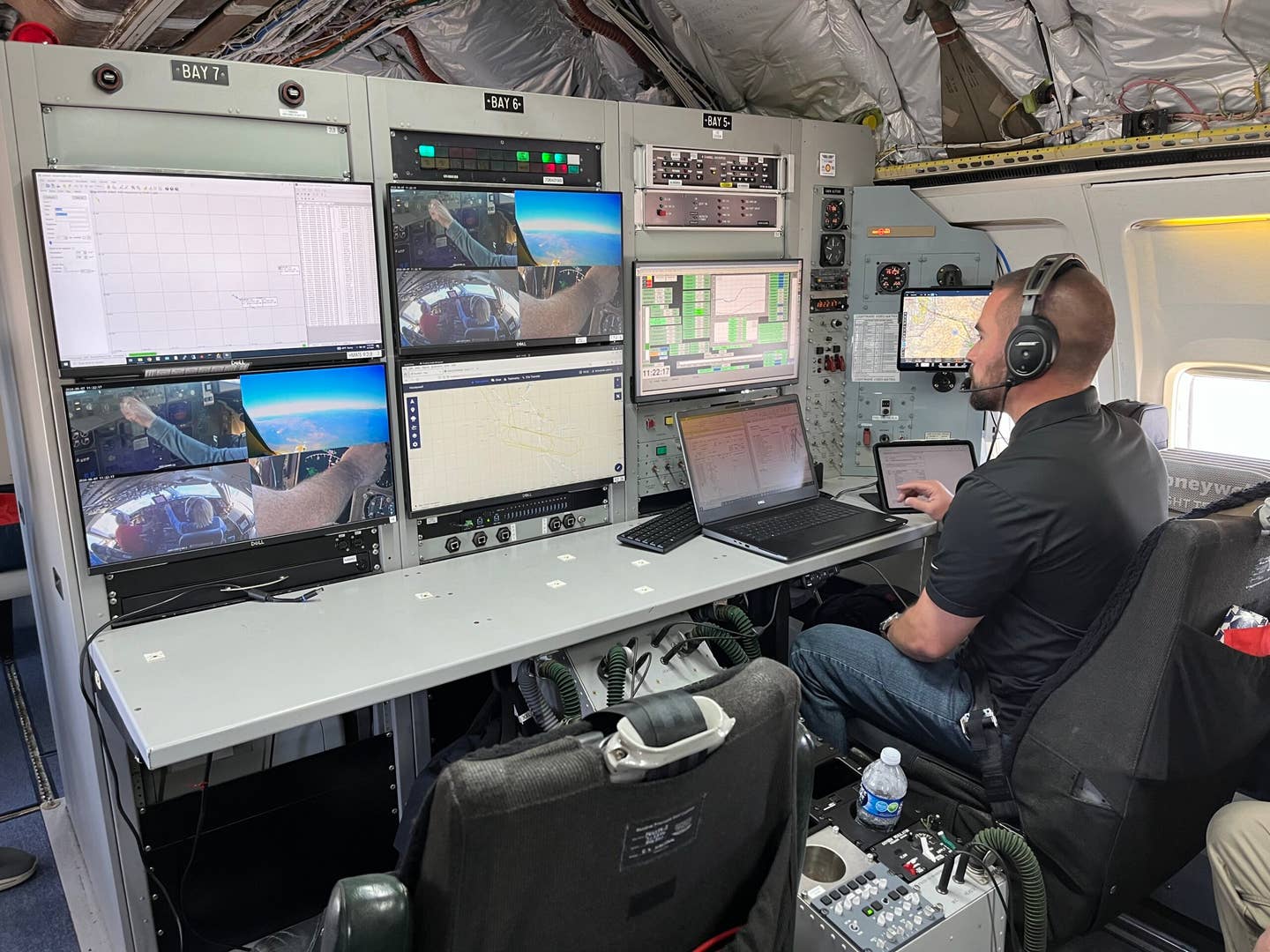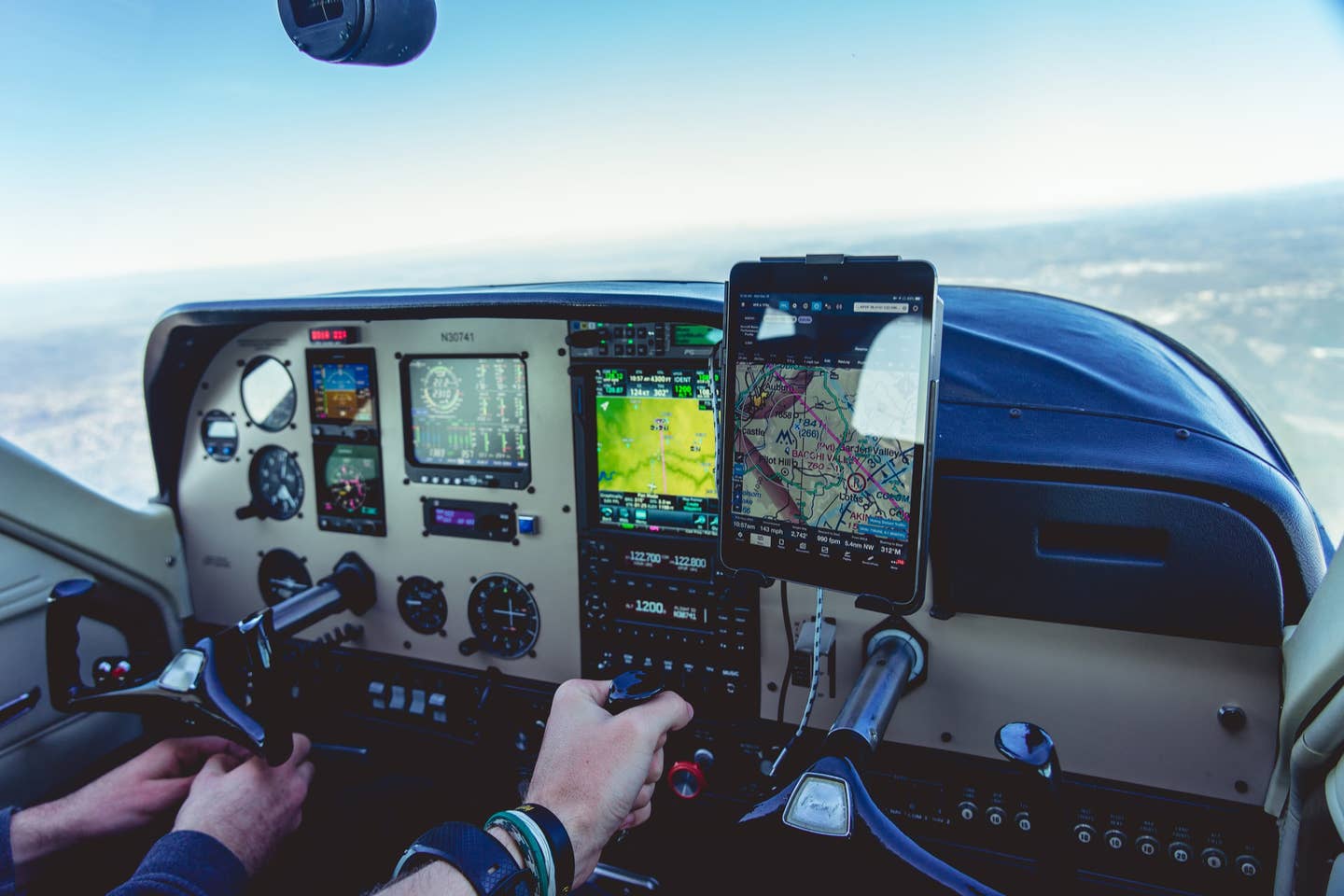
If you’re considering a panel upgrade, you have a wide variety of choices at varying price points from which to choose. Clayton Cardinalli/Unsplash
It turns out that aircraft owners who upgrade their cockpits with the latest glass-panel avionics share some interesting similarities with shoppers for smartphones, flat-screen TVs, laptops or just about any other broadly adopted consumer electronics product.When the first smartphones hit the market several years ago they were cumbersome to use, lacked capabilities and cost a small fortune. Early adopters had to have them, of course, but most people held onto their old phones, at least for a while. Over time, smartphone technology improved dramatically and prices dropped, the two ingredients necessary to attract a mass audience.The market for retrofit avionics has followed a similar trajectory. The first retrofit EFIS products to reach the market a couple of decades ago couldn’t do much beyond replacing a blue-over-brown electromechanical attitude indicator with a color screen. Despite the astronomical prices for these rudimentary early products, some aircraft owners just had to have them. Most aircraft owners said thanks but no thanks.
Next came active-matrix LCD displays and early versions of synthetic vision, which represented an important technological leap but still were priced out of the reach of most buyers. Again, early adopters couldn’t reach for their checkbooks fast enough, while the majority of pilots watched the market with curiosity but without any overwhelming compulsion to upgrade their old but serviceable six-pack instrument clusters with the shiny new glass displays.
Fast-forward to 2018 and that’s all changing. Suddenly, prices for retrofit avionics have come way down and functionalities have exploded. After the FAA relaxed avionics certification rules a couple of years ago, products originally destined for the Experimental market, such as the Garmin G5 display and Dynon D10A EFIS, were made available to owners of Part 23 piston airplanes for enticingly low prices. Those who faced expensive repair bills to fix or replace older electromechanical instruments realized they could make the relics in their panels magically disappear forever by purchasing a new solid-state EFIS with built-in inertial sensors and backup battery for about the same price as a replacement mechanical ADI.
The FAA sweetened the pot last year by allowing approval of non-TSO’d autopilots in Part 23 airplanes. Suddenly, an owner of an aging piston airplane like a Cessna Skylane or Piper Archer could upgrade to state-of-the-art glass displays and autopilots from a half-dozen manufacturers for prices that make sound economic sense.
While this revolutionary change was occurring at the low end of the market, several avionics-makers began introducing highly capable retrofit avionics systems for high-performance piston airplanes, turboprops and light jets that could transform dinosaurs into technological beasts boasting the same capabilities, or in some cases better capabilities, than new airplanes rolling out of the factory.
Clearly, the market for retrofit avionics has matured beyond the early adopter stage. According to the Aircraft Electronics Association, retrofit avionics sales exploded last year, surging more than 20 percent over the previous year. So far this year the trend is continuing, with retrofit avionics sales rising another 12.6 percent versus last year. We’re well into the “early majority” stage that product marketers so covet, soon to be followed by the “late majority” of buyers and finally the “laggards” who will upgrade their crusty old Skyhawks only after everyone else on the field is already flying with upgraded avionics.
Of course, there will always be those pilots who prefer flying with round instruments to glass, and that’s OK — but let’s face it: They haven’t made it this far in the article to know we’re talking about them.
For the rest of us — the “majority” of pilots, who understand the value of the latest cockpit technology — we want to know what the newest products to hit the market can do for us and what they cost. On the next pages we’ll take a look at what’s new in the retrofit avionics market today.
Piston Airplane Avionics
When the FAA a couple of years ago relaxed approval standards for certain avionics in certified Part 23 airplanes, it opened a pathway for manufacturers to skip the lengthy and expensive TSO certification pathway and create new products for general aviation based on ASTM standards rather than the cumbersome DO-178 standards for software, in the process sometimes slashing millions of dollars from the development costs of a single product. By achieving parts manufacturing approval (PMA) and supplemental type certification (STC) for products more typical of Experimental-category avionics, manufacturers were able to bring prices down considerably for hundreds of types through the approved model list (AML) process. Even the avionics manufacturers themselves say they did not anticipate how quickly aircraft owners would adopt these products, but it turns out that the combination of lower prices and additional capabilities makes for a winning formula.
While a stand-alone display will add some nifty capabilities to an older airplane, to truly bring your cockpit into the modern age, a complete panel retrofit is the way to go. It’ll cost more, but nowhere near the astronomically high price of a cockpit overhaul just a decade ago as products have greatly improved and the prices have come down to earth.
Garmin G500 TXI and G600 TXI
Touchscreens are going mainstream, and why not? As long as an alternative means of entering information in turbulence is offered, touch interfaces clearly are superior, as we all learned the first time we picked up an iPad. Garmin’s new touch-series cockpits, the G500 TXi and G600 TXi, incorporate touchscreens and superfast computer processors that support lightning-quick map and chart rendering, fast panning and single-finger zoom and pinch-to-zoom capabilities.
Three TXi display sizes are available, offering flexibility for panel configurations. Our favorite is the large 10.6-inch display, which just looks right in the panel of an airplane like a Beech Bonanza. There are also two versions of 7-inch displays, in portrait and landscape orientations. The 10.6-inch display can operate as a PFD, MFD or optional integrated engine indication display. The 7-inch portrait display can be dedicated to any one of those functions, while the 7-inch landscape unit is available exclusively as an engine display. The G500 TXi system is intended for Part 23 Class I/II aircraft under 6,000 pounds, and the G600 TXi for Class III aircraft weighing up to 12,500 pounds.
When the TXi series is paired with a GTN 650/750 touch-screen navigator, Connext wireless connectivity offers additional capabilities. Flight Stream 510 is an option with the GTN 650/750, which enables Database Concierge, the wireless transfer of aviation databases from the Garmin Pilot app on a mobile device to a GTN and the TXi system. Flight Stream 510 can also share information with compatible mobile devices running Garmin Pilot or ForeFlight Mobile, including two-way flight-plan transfer, traffic, weather, GPS information and backup attitude information.
Here’s the quick rundown of prices: The 10.6-inch G500 TXi display is $15,995, the 7-inch display is $11,995; the 10.6-inch G600 TXi display is $24,995, and the 7-inch display is $18,995.
BendixKing AeroVue Touch
BendixKing has been on a roll lately, introducing several new products that are turning heads and giving competitors reason to believe the storied brand is back in a big way.
The new AeroVue Touch cockpit introduced this spring is a single-box PFD retrofit option for certified general aviation aircraft that will be available for installation on 353 different aircraft types through an AML STC. AeroVue Touch features a 10.1-inch touchscreen and a “near-4K” high-resolution display offering the choice of a full-screen PFD or a split-screen shared with a moving map and other flight information. Large display buttons and infrared scanning allow easy use even by gloved hands, BendixKing says, and shallow menus provide access to all system functions with a maximum of four touches.
Additional features of the cockpit include Honeywell’s SmartView synthetic-vision system, 2D and 3D moving maps and taxi diagrams, and VFR sectional charts and IFR high- and low-altitude charts. Pilots can update databases via Wi-Fi or Bluetooth or through a dedicated USB-C port.
Future software updates are slated to include engine parameter indications, radios and autopilot control. AeroVue Touch is priced at $12,590. BendixKing expects to submit the STC documentation to the FAA this month.
Dynon Skyview HDX
Dynon Avionics made its mark in aviation with a highly capable portfolio of products for the Experimental market. Now, the company is beginning to seriously encroach on the market for certified avionics. It has received its first supplemental type certificate for the SkyView HDX avionics system aimed initially at older Cessna Skyhawks. Cessna owners can now replace the vast majority of their legacy instruments with a SkyView HDX system offering complete primary flight instrumentation and a whole lot more.
The SkyView HDX cockpit includes synthetic vision angle of attack indication and engine monitoring with CHTs, EGTs, fuel flow, fuel computer and lean assist. Dynon’s integrated two-axis autopilot also earns approval for IFR-approach capability when SkyView is integrated with a compatible GPS navigator. The approved installation includes a Mode S transponder with 2020-compliant ADS-B Out capability and moving map with ADS-B traffic and weather overlay. The backup flight instrument is the Dynon D10A, which has a built-in backup battery.
A complete SkyView HDX system costs about $20,000, plus $2,000 to purchase the STC. The initial approved model list covers Cessna 172F, 172G, 172H, 172I, 172K, 172L, 172M, 172N, 172P, 172Q, 172R and 172S models, and you can expect a diverse line of aircraft types to follow.
Aspen E5
Aspen Avionics has followed the path forged by Dynon and Garmin by introducing its own non-TSO’d electronic flight instruments for owners of Part 23-certified airplanes. Aspen’s new Evolution E5 flight instrument, unveiled this spring, is essentially the same unit as the latest certified Aspen products but with features geared toward buyers looking to keep costs in check.
The Evolution E5 display consolidates traditional attitude indicator, directional gyro and course deviation indicator instruments into a single display that retails for just under $5,000. The E5 unit also includes global positioning system steering (GPSS) and air-data computer and attitude heading reference system (ADAHRS), as well as a backup battery. Aircraft owners can also upgrade to the Evolution E5 display and a compatible TruTrak Vizion autopilot for less than $10,000, Aspen says.
What we like best about the E5 6-inch active-matrix LCD is that it’s brighter and more vibrant than previous Evolution displays, while retaining Aspen’s ingenious form factor intended to keep installation costs down by slotting into the panel space of electromechanical attitude and heading indicators.
Turboprop Retrofits
When we talk about retrofits for turboprops, what we primarily mean is the market for King Air upgrades, since many thousands of these airplanes continue to serve admirably for their owners with hull values that can justify spending a fairly substantial chunk of change to transform the flight deck into a masterpiece. All it takes is one flight in a King Air with any of the latest retrofits from the major avionics manufacturers before you decide you never want to go back to round dials or older EFIS screens again. These cockpits are so good that you’ll totally forget you’re flying an airplane that left the factory decades ago. Here are three newer King Air avionics upgrade options worth considering.
BendixKing AeroVue
BendixKing’s AeroVue cockpit is the latest to receive FAA certification in the Beechcraft King Air 200, bringing “business jet technology and functionality” to the twin turboprop’s cockpit. We visited BendixKing’s test center in Albuquerque, New Mexico, to put that claim to the test and came away impressed. The AeroVue cockpit for the King Air is a worthy competitor from a company that’s clearly focused on regaining a leadership position in the market.
The AeroVue integrated avionics package is similar in form and function to the Apex glass cockpit in the Pilatus PC-12 NG turboprop single, which pilots have been raving about since its introduction.
The AeroVue system incorporates three high-resolution 12-inch LCDs featuring Honeywell’s SmartView synthetic-vision system. AeroVue also includes a full flight management system and HUD-like symbology on the primary flight display. The flight deck includes an excellent cursor control device mounted on the center console next to an alphanumeric keypad.
The AeroVue system weighs 125 pounds less than currently installed equipment, allowing King Air B200 owners to carry more payload. All the avionics boxes are mounted in the nose rather than behind the panel for ease of maintenance. Price is competitive with the King Air G1000 retrofit cockpit from Garmin, with a fly-away price predicted at between $300,000 and $425,000, depending on what options the buyer picks.
Garmin G1000 NXi
Garmin’s G1000 NXi is a faster, modernized successor to the original G1000 cockpit now available in the King Air 200 and 300/350 models. Thanks to its improved computer processors, the system supports faster map rendering and smoother panning throughout the displays, which now initialize within seconds after start-up.
Garmin’s Connext wireless connectivity can optionally transfer aviation databases from the Garmin Pilot app on a mobile device to the G1000 NXi, as well as support two-way flight plan transfer, the sharing of traffic, weather, GPS information and backup attitude data with compatible mobile devices running Garmin Pilot or ForeFlight mobile.
G1000 NXi also supports geographical map overlays within the HSI of the PFD, as well as animated Nexrad graphics, FIS-B weather, weather radar, SafeTaxi airport diagrams, traffic and terrain information, and a whole lot more.
Price to upgrade G1000 to NXi in the King Air is about $53,000 plus installation, while a from-scratch install will cost an estimated $350,000 to $450,000.
Sandel Avilon
Sandel is attacking the King Air retrofit market with a retrofit cockpit called Avilon that is unusual for a few reasons, most notably its “guaranteed” installed price of $175,000, well below the price of cockpits from Garmin, Rockwell Collins and BendixKing.
The Avilon avionics system includes four large LCD flight displays, two smaller data-entry touchscreens, radios, flight management computers, dual AHRS, audio panel, ADS-B-compliant Mode S transponder, and flight director/autopilot (minus the autopilot servos, which are retained).
That’s a lot of features for not a lot of dough. The price is piquing the interest of King Air 200 owners who have been quoted prices of close to $100,000 just for the labor to install competing systems.
Sandel Avionics president and CEO Gerry Block explains that the installation cost is predicted to be so low because the entire Avilon instrument panel is shipped to dealers as essentially one piece.
“It takes only about five days to install our system, with 80 percent of the work being removal of the old equipment,” he says.
The system is currently flying in a company King Air 200 certification test bed, with certification expected by this fall. Sandel says it has partnered with three dealers in the United States (Stevens Aviation, Cutter Aviation and Landmark Aviation) and one in Canada (Rocky Mountain Aircraft), which have all agreed to honor the guaranteed $175,000 fly-away price.
“There are a lot of King Air cockpit retrofit choices, but very few people have been buying them because they are just too expensive to justify,” Block says. “We think this price and the capability our cockpit offers will get a lot of King Air operators off the fence.”

Subscribe to Our Newsletter
Get the latest FLYING stories delivered directly to your inbox

